I first heard the song Un millón como tú by Lasso (Venezuela) and Cami (Chile, Camila Gallardo) on February, 2. I immediately sent a message to Arianne Dowd, a fellow creator/collaborator who also likes Lasso. She responded immediately suggesting that she might use it with the novel Vida y Muerte en la MS 13. Brilliant idea! And…..oh no!! I’m going to add MORE music to this novel! (see these posts! and this one, too). I can’t help myself! The novel has been a favorite with my Spanish IV for the past 5 years, consistently being cited on end of the year evaluations as one they will remember, one that impacted them, and one in which the music was loved. And now, there is this absolutely perfect song for expressing how Analía’s family and Los Salvatruchas felt about their relationship (with a little imagination). The song has been an absolute HIT with my students, many of them singing it by heart! Combined with No hay nadie más by Sebastián Yatra, they create the perfect background for chapters 6 – 8 in the novel.
Step 1
I felt like my students needed to make some vocabulary/phrase connections. So, I targeted specific lyrics, found images to represent them and had students match the lyrics to the images as they read through the lyrics. 
Step 2
A. Find lyrics from the song that will support these lines from the novel:
A veces era un poco difícil estar juntos porque teníamos que salir a escondidas. Nadie estaba de acuerdo con nuestra relación, ni la familia de ella ni la mía, los Salvatruchas.
Sample answers: Y mis amigos me dicen que buena noticia que ya tú no estás
Dicen que ya no te llame; Todos opinan igual , Serás fácil de olvidar; y mis amigas
celebran felices que ya tú no estás
B. Find text from the novel to support this lyric from the song:
Debe ser que tú al final, si eras muy especial
(Additionally, the above text/lyric support activities actually complement English Language Arts standards for writing in grades 11 – 12!)
Step 3
Listen to the song and complete traditional cloze 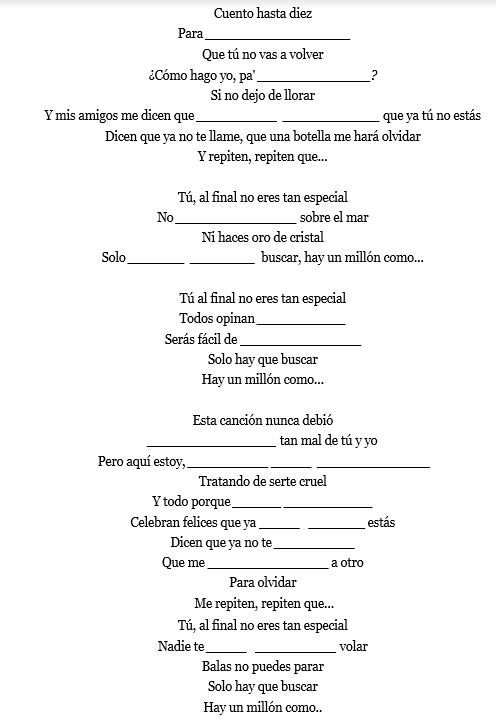
Read through the lyrics in English, then sing this much of the song. We then read through the remainder of the lyrics, where, after questioning why he/she can’t sleep, eat, etc. the opposite is declared: Tú al final sí eras muy especial and Tú al final eras el más especial. My angst driven teens just loved it! What a connection was made when they realized the twist in this love song AND when they began to realize, or question, that something is going to happen in the next chapters just as tumultuous with our narrator and Analía.
Step 4
Create a conversation:
Elige una:
- Toma el papel (role) del narrador y escribe una conversación entre sus compañeros o Pedro. Usa letras espécificas de la canción. Usa también tu imaginación y otras palabras.
- Toma el papel (role) de Analía y escribe una conversación entre sus compañeras o abuela. Usa letras espécificas de la canción. Usa también tu imaginación y otras palabras.
Usa tu propia papel. Por lo menos 8 líneas.
Of course, this song would be appropriate in many different situations, not just in this novel. The video is completely appropriate, the lyrics are comprehensible, the melody is memorable, and the song is absolutely “singable”.
Today I read how Andrés Vicente Lazo Uslar, known as Lasso, did, in reality, break up with his girlfriend, of 7 years, Sheryl Rubio, in September 2018. There has been great drama, with much of it played out on Twitter. See this article, and this one, and finally, this one. This could add another dimension to the song!
I’d love to hear from you if you use the song or create additional activities!

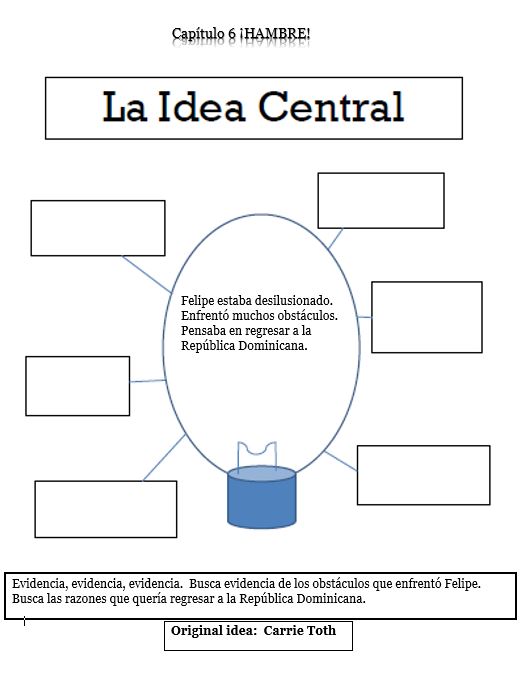


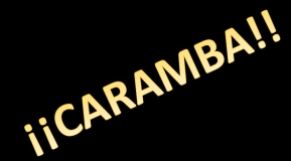


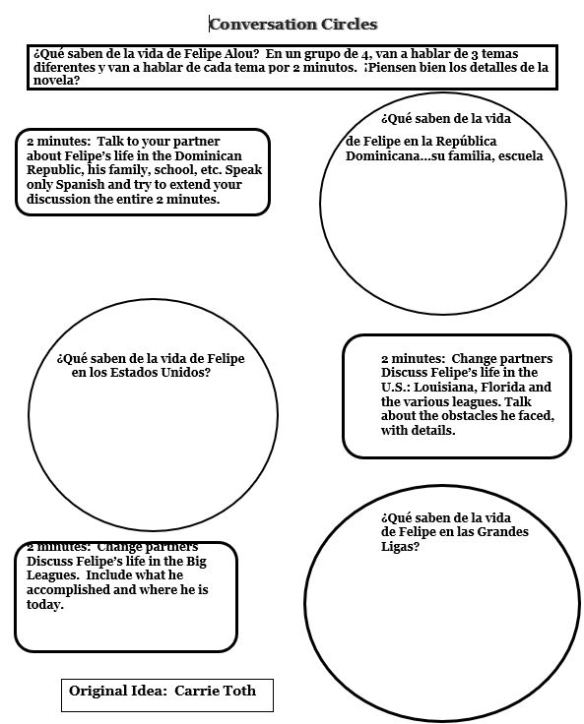



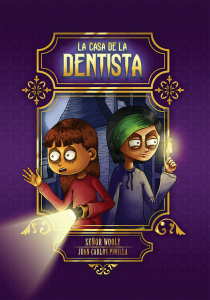 Once inside, the illustrations aid in stimulating the imagination, heightening the readers’ emotional response and perceptions, and definitely holding the attention of the reader while helping the reader move through the narrative. These illustrations are actively involved in assisting the reader comprehend the input that is repeatedly, creatively and uniquely expressed in the written words. Jim’s inspired, gifted narrative is marvelously enhanced by the illustrations of Juan Carlos Pinilla (Colombia), colorization by Davi Comodo (Brazil) and lettering by Lucas Gattoni (Argentina).
Once inside, the illustrations aid in stimulating the imagination, heightening the readers’ emotional response and perceptions, and definitely holding the attention of the reader while helping the reader move through the narrative. These illustrations are actively involved in assisting the reader comprehend the input that is repeatedly, creatively and uniquely expressed in the written words. Jim’s inspired, gifted narrative is marvelously enhanced by the illustrations of Juan Carlos Pinilla (Colombia), colorization by Davi Comodo (Brazil) and lettering by Lucas Gattoni (Argentina).

